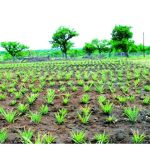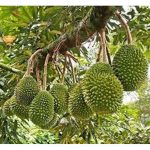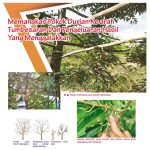In Malaysia, both cattle and goat farming can be profitable — but the better choice depends on scale, feed availability, land type, and market strategy. Let’s explore both in a story-like narrative that mirrors the reality faced by Malaysian livestock farmers.
The Cattle Farmer’s Path: Slow but Steady Wealth
Imagine Encik Rahman, a mid-sized cattle farmer from Negeri Sembilan. He started with 20 Brahman-cross cows on 10 acres of oil palm intercropped pasture. His goal was simple: grow calves for the booming beef market in Malaysia, which still imports over 70% of its beef needs.
Cattle farming has strong fundamentals — Malaysia’s beef demand far exceeds its local production. A mature cow can fetch RM4,000–RM6,000 live weight, and well-managed feedlot operations can achieve daily weight gains of 0.8–1.2 kg. However, the challenge lies in capital intensity and slow turnover.
Cows need large grazing areas, quality feed, and at least 18–24 months to reach market weight. For smallholders, that’s a long wait before cash flow returns. Feed costs (especially for feedlot systems) can easily consume 60–70% of total expenses.
Still, Rahman’s long-term view paid off: by year five, he had grown his herd to 60 heads, earning a steady annual profit margin of 15–20%. His success depended on integrating oil palm waste (fronds, PKC) as feed and selling organic manure to nearby vegetable farms — an important diversification strategy in cattle rearing.
Cattle farming, thus, is like a long-distance race — capital-heavy, land-demanding, but reliable once established.
The Goat Farmer’s Path: Quick, Nimble, and Niche
Now meet Puan Aisyah, a goat farmer from Perak who started with 30 Boer goats on just 2 acres. Unlike cattle, goats are fast breeders — a doe can give birth twice a year, usually with twins. Within 18 months, Aisyah doubled her herd and began supplying fresh chevon (goat meat) to local restaurants and festive markets.
Malaysia’s goat meat market is smaller than beef, but it carries a premium. Live goats fetch RM25–RM35 per kg, sometimes higher for purebred Boer or Jamnapari crosses. Feed costs are lower if farmers use napier grass, leucaena, or oil palm leaves.
Most importantly, goats require less space, making them suitable for small-scale or semi-urban farmers. They also have strong demand during festive seasons (Hari Raya Qurban, kenduri, etc.) and niche markets like goat’s milk and organic fertilizer.
However, goat farming also has risks: they are susceptible to parasites, and without good housing and veterinary care, mortality can erode profits quickly. Still, well-managed farms can achieve 30–40% annual return on investment due to fast reproduction and lower setup costs.
In short, goat farming is like a short sprint — quick returns, flexible scaling, but more hands-on work and disease vigilance.
Head-to-Head Comparison
| Aspect | Cattle Farming | Goat Farming |
| Capital Requirement | High (RM50k–100k for small herd) | Moderate (RM20k–40k to start) |
| Land Requirement | 1–2 acres per 10 heads | 1–2 acres for 30–50 heads |
| Feed Source | Grazing + PKC + silage | Napier, leucaena, kitchen waste |
| Breeding Cycle | 18–24 months | 6–8 months |
| Profit Margin | 15–20% (long-term) | 30–40% (short-term) |
| Market Demand | High and consistent | Smaller but high-value niche |
| Risk Factors | Feed cost, capital tie-up | Disease, management skill |
| Diversification Options | Manure, agrotourism | Milk, meat, manure, agrotourism |
Conclusion: Which One Wins?
If you have ample land, patience, and long-term capital, cattle farming builds stable wealth and can integrate with oil palm estates or feedlot systems. It suits investors looking for scalable agribusiness with government incentives.
But if you have limited land and want faster cash flow, goat farming is more profitable per acre and easier to manage with family labor. It’s perfect for smallholders, youth farmers, or integrated agrotourism projects.
In Malaysia’s context today, the goat often wins in profitability per unit land and cash turnover, while the cattle wins in long-term stability and market scale.
Or, as farmers like to say —
“If you want quick money, go for goats. If you want to build an empire, grow your cattle.”
Source: Professional Platform
Note: For Reference Only










